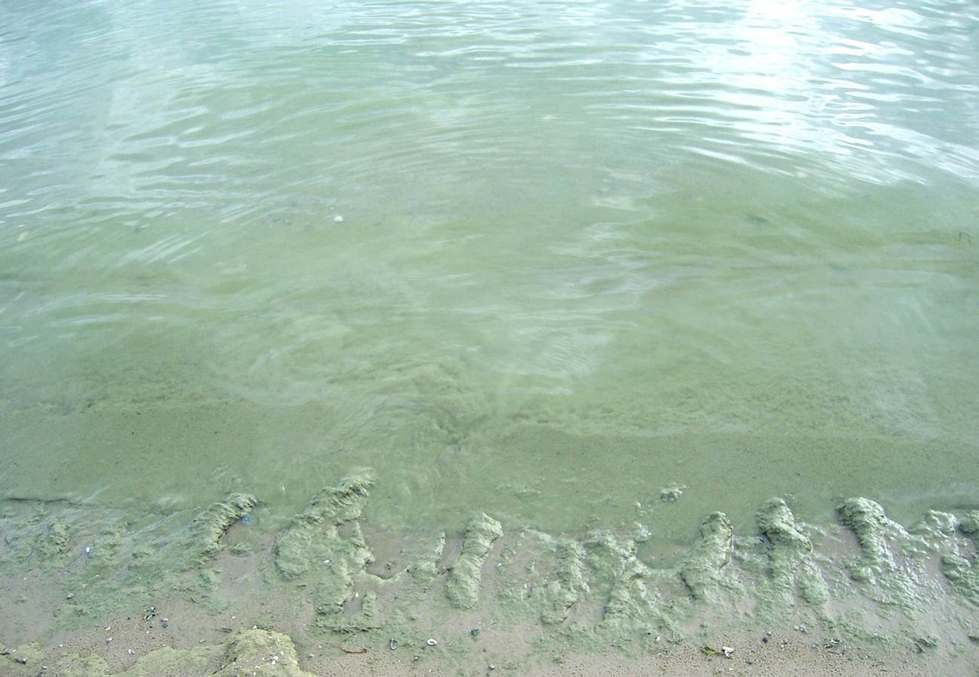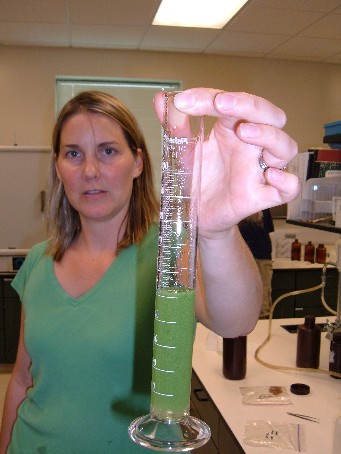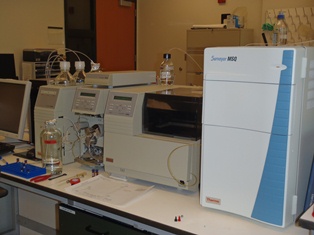Cyanobacteria Blooms
Cladophora Mat
Water Sample loaded with algal cells
HPLC-MS for Algal Toxin Analysis
Cyanobacteria Blooms
Cyanobacteria blooms continue to cause recreation and water supply problems in the Great Lakes basin. Our laboratory is involved in the measurement of cyanotoxins, and the investigation of the role of environmental parameters in bloom dynamics. The Environmental Chemistry Laboratory provided LC/MS confirmation that microcystin congeners were present in samples collected from Lake Erie by the NOAA, and expanded cyanotoxin analyses to include anatoxin. We measured anatoxin in 20 samples, and the compound was found in 8 samples at low levels. We are in the process of expanding our research focus into the areas of in situ bloom assessment and genomics. We are also examining cyanotoxins in Silver Lake as part of a project with AWRI (Steinman Laboratory) and USGS. A graduate student (Sarah Stamann) used this project to conduct additional experiments on cyanobacteria recruitment for her thesis. Her preliminary results have shown that Gloeotrichia blooms in Silver Lake do not produce significant amounts of cyanotoxins and that recruitment dynamics are influenced by sediment phosphorus concentrations and temperature. Most of our previous research has focused on Microcystis and other common cyanobacteria species. Gloeotrichia blooms are more frequently reported in west Michigan lakes and we look forward to conducting further research with this species with respect to sediment chemistry and climate change.
Research:
- Population Dynamics and Toxin Production in Gloeotrichia echinulata, in Silver Lake, Michigan.
- Assessment of E. coli and Microcystins in Cladophora Mats in the Near-shore Waters of Traverse Bay, Little Traverse Bay, and Saginaw Bay.
- Cyanobacteria and Associated Toxins in West Michigan Lakes
- Microcystis in Lakes Erie and Huron.
- Assessment of Cyanobacteria Toxins and their Potential for Release by Algaecide Application in Muskegon County Lakes.
- The Role of Environmental Parameters in the Structure of Phytoplankton Assemblages and Cyanobacterial Toxins in two Hyper-eutrophic Lakes.
- The Influence of Environmental Conditions and Hydrologic Connectivity on Cyanobacteria Assemblages in two Drowned River Mouth Lakes.
- Late Summer Phytoplankton in Western Lake Erie (Laurentian Great Lakes): Bloom Distributions, Toxicity, and Environmental Influences.



